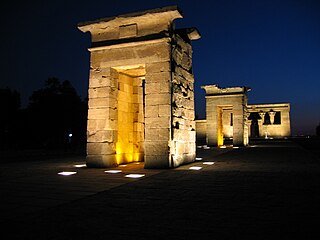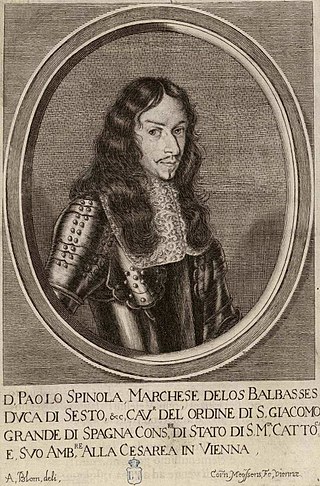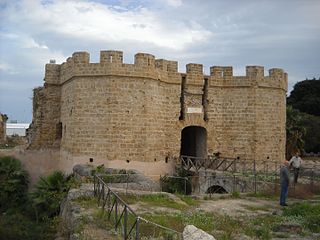Life
Francesco was born in 1672 to Juana de Moura y Moncada de Aragón [ it ], a Spanish noblewoman of Portuguese ancestry, and Giberto Pio di Savoia (1639–1676), descendant of an ancient and somewhat decayed seignorial family from Emilia, who died when his son was just four years old.
Francesco grew up in Rome under the care of his half-uncle, cardinal Carlo Pio di Savoia, the patriarch of the family, [1] and of his youngest uncle, the prelate Enea. Towards the end of the century he moved to seek his fortune in Spain with his aunt Leonor de Moura y Moncada de Aragón who held his maternal family's assets and titles before they were passed on to his mother in 1706.
At the outbreak of the War of the Spanish Succession he immediately espoused the cause of Philip V of Bourbon, and joined his army. He had a distinguished military career, being made a "mariscal de campo" (lieutenant general) of the Royal Spanish Armies in 1705, inducted into the Order of the Golden Fleece in 1708 and made a Grandee of Spain in 1720. He went on to hold various governmental positions including Governor-General of the Kingdom of Sicily, Governor of Madrid and Captain-General of Catalonia.
He married some time before 1712 to Juana Spínola Colonna y de la Cerda (1683–1738), herself a scion of Spanish nobility, and they had a son, Gisberto, and 3 daughters: Margherita Eleonora, Lucrezia and Isabel Maria, who themselves all went on to marry high-ranking Spanish-Italian nobles. Gisberto Pío de Saboya y Spinola died without issue in 1776 and the hereditary titles were passed on through Isabel Maria's line.
Francesco drowned in Madrid, together with his sister-in-law, María Teresa Spínola y de la Cerda, on 15 September 1723, when a storm swept his carriage into the Manzanares River. [2]
The Príncipe Pío hill and the nearby multimodal train station Príncipe Pío in Madrid are named after him.

The montaña del Príncipe Pío is a hill in the western part of Madrid, Spain.
Pio, an ancient noble Italian family, was first mentioned by good authorities in the 14th century. After having long contended for the city of Modena with the House of Este, in 1336 they eventually agreed to renounce it, on condition that they retained the smaller domain of Carpi for themselves. They maintained control of Carpi for nearly 200 years and later acquired the minor fiefs of Sassuolo, Meldola, and Sarsina, etc. Many members of the family were distinguished as condottieri, diplomats or ecclesiastics.
Marquis of Castelo Rodrigo was a title of Portuguese nobility created by Philip II of Portugal on 29 January 1600 for Dom Cristóvão de Moura, 1st Count of Castelo Rodrigo. The Moura family claimed its origin from the re-conquest of Moura from the Moors, during the Reconquista in 1165.
The Sicilian title Duke of Bivona stems from the middle 16th century. Bivona is in Sicily, which had been conquered by Peter III of Aragon in 1282. It was given to people related to the powerful medieval Aragonese family of Luna, Zaragoza.

Paolo Spinola or Pablo Spínola Doria, 3rd Marquis of the Balbases and 3rd Duke of San Severino and Sesto, was a Spanish nobleman of Italian descent and a diplomat.
Carlo Filippo Antonio Spinola y Colonna, 4th Marquis of the Balbases, was Viceroy of Sicily from 1707 to 1713, during the Spanish Succession War.

Luis Guillermo de Moncada y de Aragon y de la Cerda y de la Cueva was a Spanish nobleman and Roman Catholic cardinal. He was a Knight of the Military Order of Alcantara in 1630, Viceroy of Sicily 1635 -1639, Captain General and Viceroy of Sardinia (1644), Viceroy of Valencia in 1652 and a Knight of the Order of the Golden Fleece in 1651.

Fernando de Aragón y Guardato, 1st Duke of Montalto was the eldest bastard son of king Ferdinand I of Naples and Diana Guardato, one of his mistresses.
The Caballerizo mayor was the Officer of the Royal Household and Heritage of the Crown of Spain in charge of the trips, the mews and the hunt of the King of Spain.

Príncipe Pío is a multimodal train station in Madrid, Spain that services Madrid Metro's Line 6, Line 10, and Ramal; Cercanías Madrid's commuter rail lines C-1, C-7, and C-10; and city buses and intercity and long-distance coaches. It is located next to the River Manzanares between the San Vicente roundabout and the streets of Cuesta de San Vicente, Paseo de la Florida, and Paseo del Rey in the district of Moncloa-Aravaca. It is one of the busiest stations in the Madrid Metro and Cercanías systems.

Duke of Alcalá de los Gazules, commonly known as Duke of Alcalá, is an hereditary title in the Peerage of Spain accompanied by the dignity of Grandee, granted in 1558 by Philip II to Pedro Afán de Ribera, 3rd Marquess of Tarifa, Lord of Alcalá de los Gazules and Viceroy of Naples and Catalonia.

Nicolás Fernández de Córdoba y de la Cerda, 10th Duke of Medinaceli, GE was a Spanish aristocrat. He was the 10th Duke of Medinaceli, an Ambassador of the King of Spain, Majordomo and Stable master of the queen, and a knight of the Order of the Golden Fleece.

Buenaventura Fernández de Córdoba-Figueroa y Spínola de la Cerda was a Spanish aristocrat and Catholic priest who became Patriarch of the West Indies and a Cardinal.

Marquess of Priego is a hereditary noble title of the Kingdom of Spain that Ferdinand the Catholic granted on 9 December 1501 to Pedro Fernández de Córdoba y Pacheco, 7th Lord of Aguilar in Córdoba, of the house of Córdoba. It is one of the most important noble titles in Spain, and was made a first class grandee in 1520 by Charles V, Holy Roman Emperor.

Antonio Ponce de León y Spínola, 11th Duke of Arcos, GE was a Spanish peer and army officer. The last male representative of the House of Ponce de León, he was known for his extensive wealth. For a period of time, he was the sole largest employer in Western Europe, having over 3,000 servants working for him at one point.

Duke of Nochera is a hereditary title in the Peerage of Spain, accompanied by the dignity of Grandee. Originally styled "Duca di Nocera", it was granted in 1656 by Philip IV to Francisco de Moura Corterreal, Viceroy of Sardinia and Catalonia and governor of the Spanish Netherlands. The title made reference to the town of Nocera dei Pagani, in the Kingdom of Naples, subjected to Spain at the time.
Alessandro Pico della Mirandola, known under the pseudonym Abate Pico della Mirandola, was an Italian nobleman and politician, and the last male descendant of the Pico della Mirandola lineage.

Francesco Maria Pico, also known as Francesco Maria II Pico della Mirandola to distinguish him from his father, was an Italian nobleman, third Duke of Mirandola and fourth Marquis of Concordia.

Eleanor de Moura was a Spanish noblewoman of Portuguese birth, notable for serving as Viceroy of Sicily for one month in 1677.












